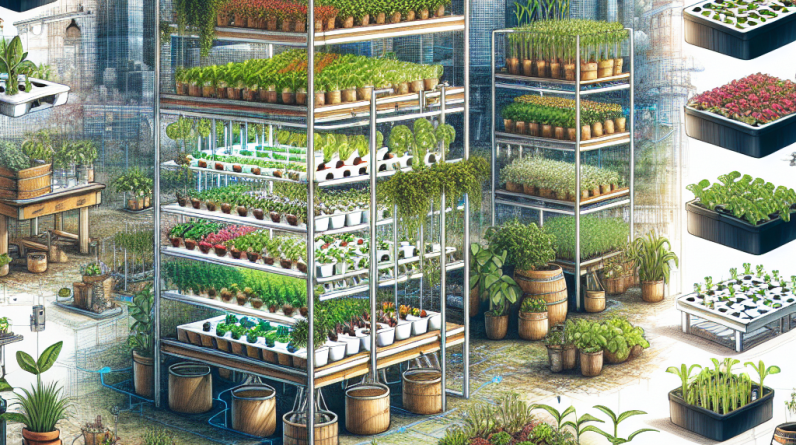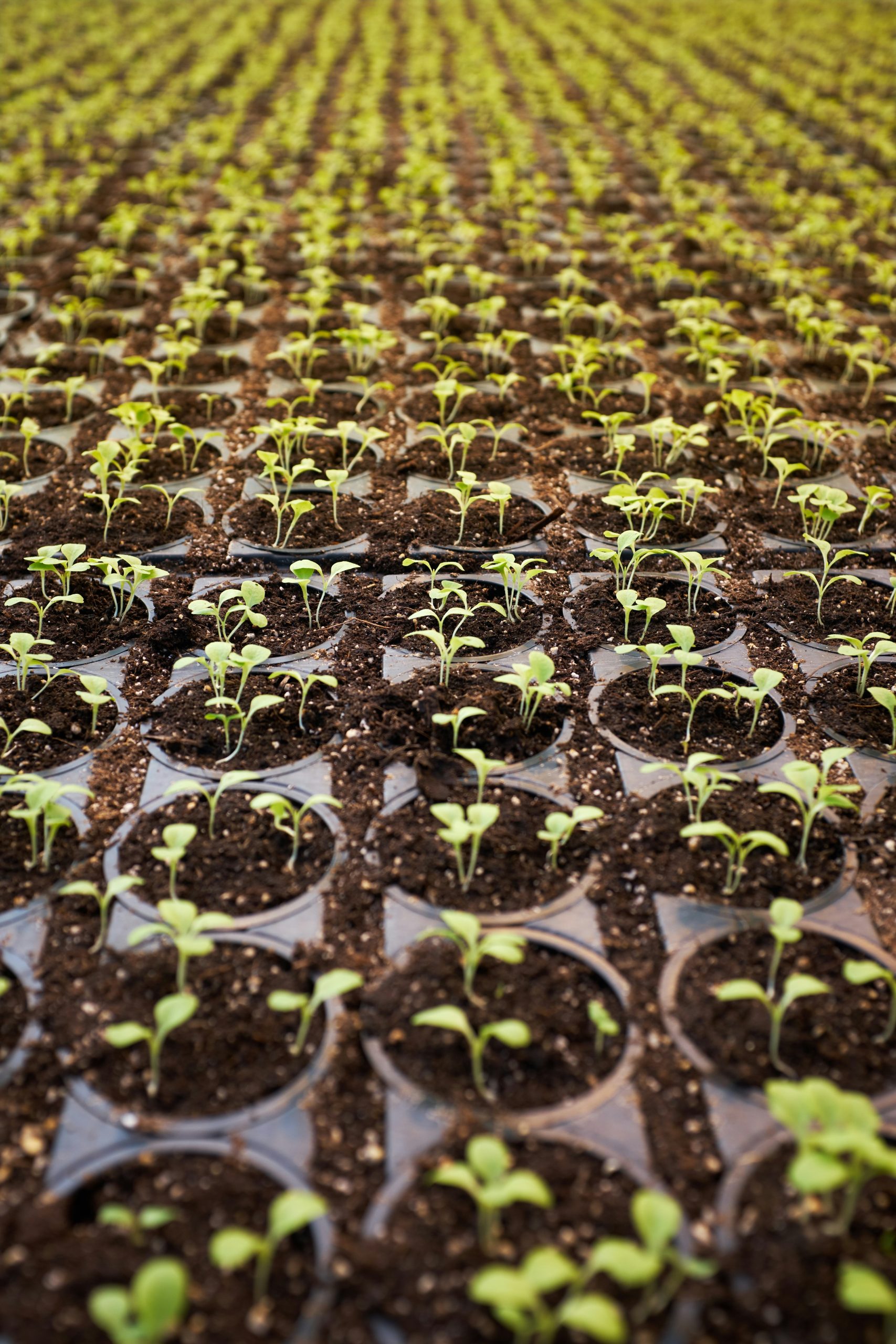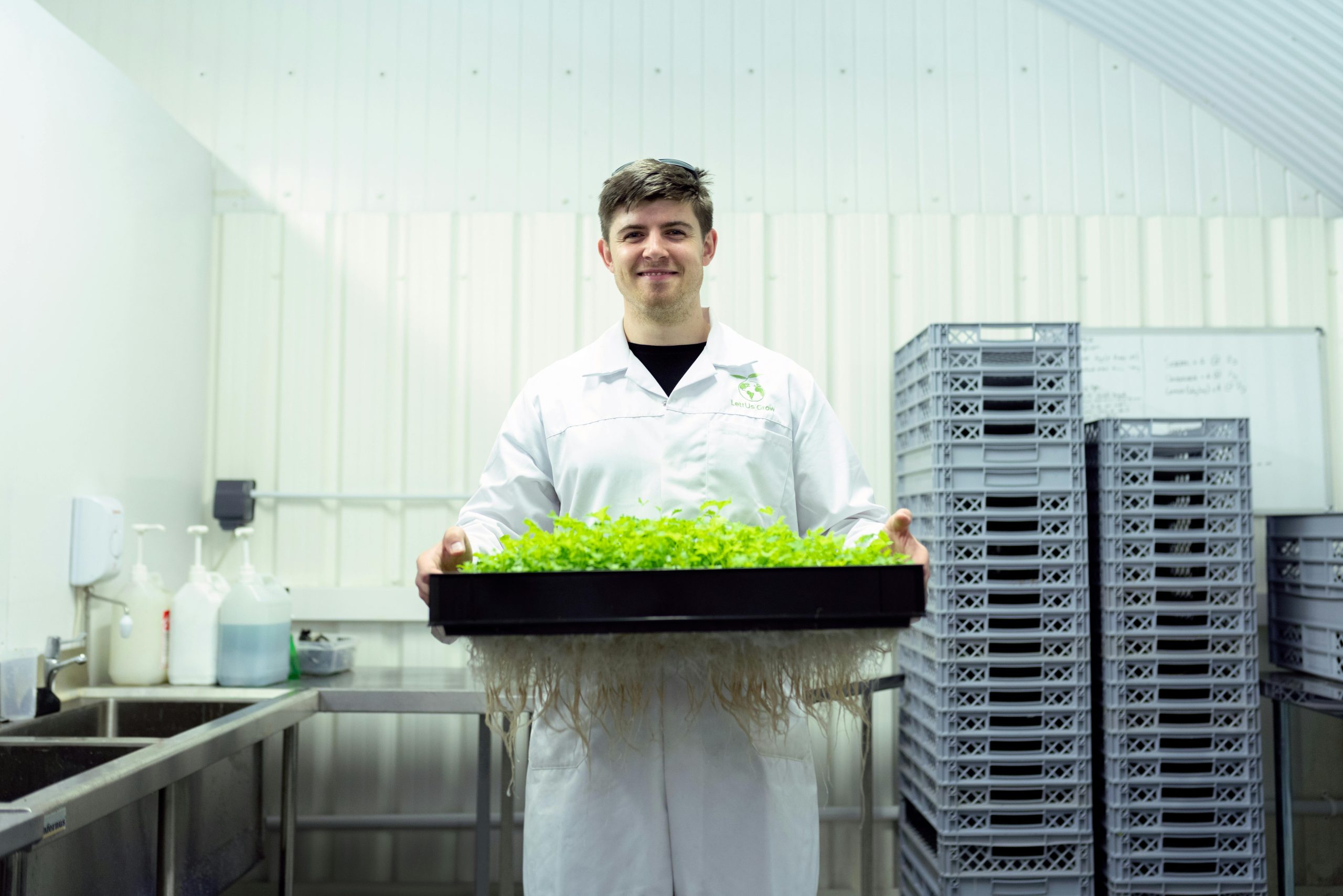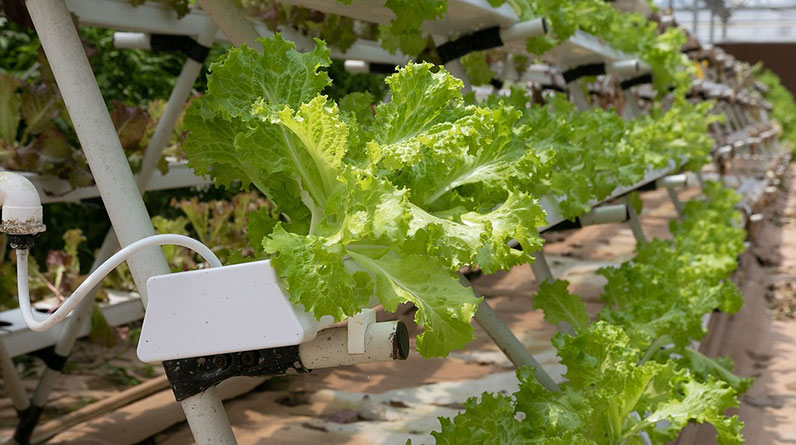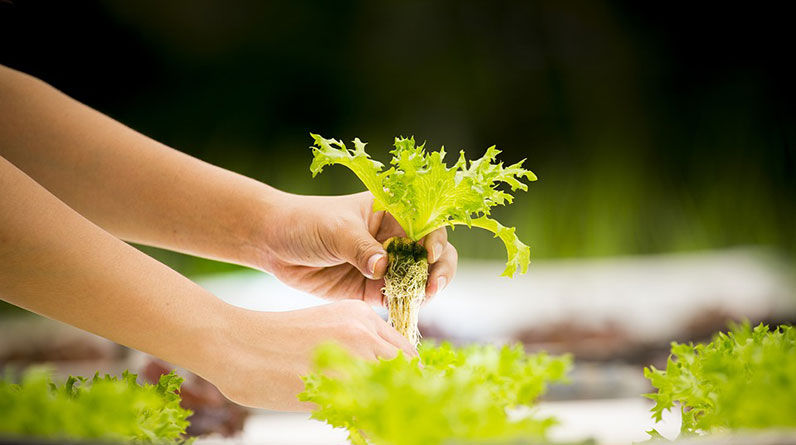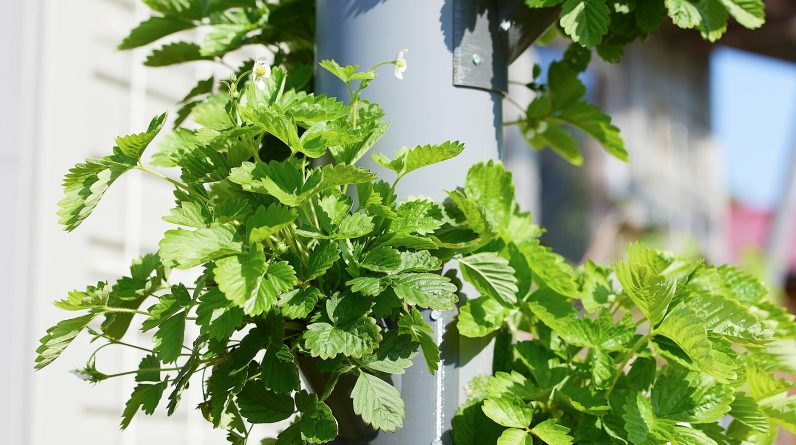
- Choose the Right Hydroponic System
- Optimizing Nutrient Solutions
- Controlling Environmental Factors
- Maintaining pH and EC Levels
- Plant Spacing and Staggered Planting
- Light Management for Healthy Growth
- Recognizing and Preventing Pests & Disease
- Harvesting and Post-Harvest Care
- Troubleshooting Common Issues
- Keeping Up with the 2025 Trends
1. Choose the Right Hydroponic System
Understanding Different Hydroponic Setups
When it comes to hydroponic lettuce growing, selecting the appropriate system is crucial. Popular options like deep water culture (DWC), nutrient film technique (NFT), and drip systems each have their pros and cons. For beginners in 2025, DWC and NFT are often preferred because they promote rapid growth and ease of maintenance.
For example, DWC systems involve roots submerged directly in nutrient-rich water, providing constant oxygenation and nutrients. This setup is ideal for leafy greens like lettuce, which thrive in such environments. On the other hand, NFT systems allow a thin film of nutrient solution to flow over the roots, minimizing water usage while promoting healthy growth.
Choosing a system also depends on your available space, budget, and long-term goals. Some grower success stories in 2025 highlight how small-scale vertical NFT setups can maximize yield in limited spaces, making hydroponic lettuce growing accessible for urban farmers and hobbyists alike.
Factors to Consider When Selecting a System
The key factors include ease of setup, scalability, and maintenance requirements. Manufacturers now offer modular and automated options, which can significantly reduce labor. Investment in quality components pays off by minimizing failures and optimizing crop health.
Consider the water and nutrient delivery accuracy, as inconsistent supply can stunt lettuce growth or cause disease. Systems with built-in monitoring features are becoming more popular in 2025, helping growers adjust in real time for optimal results.
Lastly, portability and cleaning ease also matter. A well-chosen system ensures that hydroponic lettuce growing remains efficient and enjoyable, especially for those just starting their journey.
2. Optimizing Nutrient Solutions
Key Nutrients for Healthy Lettuce
Hydroponic lettuce growing relies heavily on balanced nutrient solutions. Essential nutrients include nitrogen, phosphorus, potassium, calcium, magnesium, and trace minerals like iron and manganese. In 2025, tailored nutrient mixes designed for leafy greens have become a game-changer for maximizing yield and flavor.
For example, lettuce prefers a nitrogen-rich environment during its leafy growth phase. Using high-quality, pre-mixed hydroponic nutrients simplifies the process, ensuring your plants receive the right balance. Regularly testing and adjusting the nutrient solution keeps the plants in their optimal growth zone.
Using sensors and automation, many hydroponic growers in 2025 are now able to maintain precise nutrient profiles, minimizing waste and environmental impactâvital for sustainable hydroponic lettuce growing practices.
Maintaining Nutrient Concentration
Monitoring Electrical Conductivity (EC) levels helps you gauge the nutrient concentration in your hydroponic system. Lettuce typically requires an EC of 1.2-1.8 mS/cm for optimal growth. Too high can cause salt buildup, while too low might limit growth.
In 2025, automated dosing systems are increasingly accessible, making it easy to keep nutrient levels steady. Regularly checking and adjusting your nutrient solution prevents deficiencies and enhances plant health.
Remember, water quality impacts nutrient effectiveness, so using filtered water can improve overall results for hydroponic lettuce growing.
3. Controlling Environmental Factors
Temperature and Humidity Management
Optimal temperature for hydroponic lettuce growing in 2025 is between 65-70°F (18-21°C). Maintaining consistent temperatures ensures rapid, healthy growth and reduces stress. Humidity levels should be kept around 50-60% to prevent mold and diseases.
Using climate control systems such as heaters, fans, and dehumidifiers can help maintain these parameters, especially in fluctuating weather conditions. Regular monitoring and automation tools make this easier for growers, leading to higher yields.
Effective environmental management minimizes issues like bolting (premature flowering), which can occur if temperatures climb too high, affecting quality and harvest time.
Vents and Air Circulation
Good air circulation is essential to prevent mold and promote transpiration. Ventilation systems, including exhaust fans and oscillating fans, help maintain fresh airflow within your grow area.
In tight spaces, introducing proper circulation reduces humidity pockets and ensures that carbon dioxide levels stay optimal for photosynthesis. Growing lettuce in a well-ventilated environment also helps prevent pest and disease outbreaks.
Automation in 2025 often integrates environmental sensors that trigger fans or vents, maintaining ideal conditions with minimal manual effort.
4. Maintaining pH and EC Levels
Importance of pH Optimization
Keeping the pH of your hydroponic nutrient solution between 5.8 and 6.2 is vital for absorption efficiency. Deviations can lock out essential nutrients, leading to deficiencies or toxicity.
In 2025, user-friendly pH meters and automated pH adjusters make maintaining optimal levels easier than ever. Regular testing, at least once a week, helps catch issues early and keeps lettuce plants healthy.
Adjusting pH is simpleâadding small amounts of pH up or down solutions allows precise control, ensuring consistent nutrient uptake for robust lettuce growth.
Managing Electrical Conductivity (EC)
Electro Conductivity measures how concentrated your nutrient solution is. Maintaining proper EC ensures your lettuce gets enough nutrients without excess salts. For hydroponic lettuce growing, 1.2-1.8 mS/cm is ideal.
Adjusting the EC involves diluting or concentrating the nutrient solution, which can be automated in modern systems. Regular calibration of EC meters is essential to accuracy.
This diligent management enhances plant health, yield, and tasteâmaking it a fundamental part of your hydroponic lettuce growing routine in 2025.
5. Plant Spacing and Staggered Planting
Optimal Spacing for Healthy Lettuce
Proper spacing prevents competition for nutrients and light, leading to uniform, high-quality lettuce heads. Typically, spacing 4-6 inches apart works well for most varieties.
Adjust your layout based on your systemâs capacity and growth habits. Use plant trays or net pots to maintain consistent spacing, especially in vertical systems, maximizing space utilization.
In 2025, advances in grower techniques favor staggered plantingâsowing new seeds every few weeksâensuring a continuous harvest cycle and steady supply.
Implementing Staggered Planting Schedules
Staggered planting involves scheduling plantings at different stages, which can spread out labor and prevent overloading your system at once. This strategy also provides fresh lettuce for consumption throughout the season.
Tracking planting schedules with digital tools can streamline operations and keep harvests predictable. Itâs especially useful in small-scale operations aiming for year-round production.
Adopting this method in 2025 has proven highly effective, enabling growers to maximize their hydroponic lettuce growing potential.
6. Light Management for Healthy Growth
Choosing the Right Lighting
Since lettuce requires around 12-16 hours of light daily, LED grow lights are preferred for their efficiency and spectrum control. In 2025, full-spectrum LEDs that simulate natural sunlight are widely available.
Adjusting light intensity ensures lush, uniform growth. Conversely, too much light can cause stress, while too little delays growth. Automation systems can fine-tune lighting schedules based on the plantâs age and environmental conditions.
For outdoor hydroponic lettuce growing, supplemental lighting can extend growing seasons in colder months, increasing year-round production.
Light Distance and Duration
Maintaining the correct distance between the light source and your plants prevents scorching or insufficient illumination. Typically, LEDs should hang around 12-18 inches above the lettuce canopy.
In 2025, programmable timers and sensors help optimize light cycles automatically, leading to healthier, faster-growing lettuce crops. Consistency is key to prevent fluctuations in growth rates.
Additionally, monitoring light levels with PAR (Photosynthetically Active Radiation) meters ensures your lettuce receives adequate light for maximum photosynthesis.
7. Recognizing and Preventing Pests & Disease
Common Pests and How to Handle Them
While hydroponic systems reduce pest presence, pests like aphids, whiteflies, and spider mites can still appear. Regular inspections are vital to catch early signs.
Biological controls, such as ladybugs or predatory mites, are environmentally friendly options in 2025 to keep pests in check. Organic sprays like neem oil can also be effective when used properly.
Healthy, vigorous plants are less susceptible. Maintaining optimal environmental conditions minimizes pest attraction and proliferation.
Preventing and Managing Disease
Fungal diseases like powdery mildew and root rot can impact hydroponic lettuce growing if humidity and moisture levels are not controlled. Proper ventilation and spacing reduce these risks.
Implementing sanitation protocols and using disease-resistant lettuce varieties contribute to healthier crops. In 2025, digital monitoring tools help identify environmental stressors that could promote disease development.
Prompt removal of infected plants and adjusting environmental factors are essential steps to contain outbreaks and ensure continued successful lettuce production.
8. Harvesting and Post-Harvest Care
When and How to Harvest
Knowing the right time to harvest ensures maximum freshness and flavor. Lettuce is typically ready in 30-45 days after planting, depending on the variety.
Use sharp scissors or knives to cut the outer leaves or the entire head when mature. Handling gently prevents bruising, which can lead to spoilage.
In 2025, some growers employ harvest-timing apps that analyze plant size and growth data, optimizing harvest windows for peak quality.
Post-Harvest Handling Tips
Proper cleaning, cooling, and packaging extend shelf life. Rinsing gently with clean, cool water removes dirt and pests, then drying thoroughly is crucial.
Storing lettuce in a refrigerated environment at around 35-40°F (2-4°C) with high humidity keeps freshness longer. Vacuum packaging or breathable bags also help maintain quality during transport.
Implementing these post-harvest techniques enhances consumer satisfaction and reduces waste, vital for commercial hydroponic lettuce growers in 2025.
9. Troubleshooting Common Issues
Addressing Nutrient Deficiencies
Yellowing leaves or stunted growth often indicate nutrient deficiencies, especially nitrogen. Regular testing and adjusting your nutrient solution can resolve these issues.
Inconsistent EC and pH readings are common culprits. Keeping detailed logs helps identify patterns and prevent recurrent problems.
In 2025, AI-powered monitoring devices can diagnose deficiencies early, saving time and resources for hydroponic lettuce growing.
Dealing with System Failures
Pump failures, clogging, or power outages can disrupt nutrient supply and jeopardize crops. Preventative maintenance and backup systems are crucial.
Always have spare parts and contingency plans in place, especially for larger setups. Regularly inspecting equipment minimizes unexpected failures.
Fast response to system issues ensures your hydroponic lettuce growing operation remains profitable and sustainable in 2025.
10. Keeping Up with the 2025 Trends
Technological Innovations
The future of hydroponic lettuce growing lies in automation, IoT integration, and AI diagnostics. These advancements help optimize conditions, increase yields, and reduce labor costs.
Smart sensors now provide real-time data on moisture, nutrients, and environmental factors, allowing for precise adjustments. Such tools are becoming more affordable and user-friendly.
Staying updated through industry webinars, forums, and publications in 2025 will ensure you leverage the latest tools for successful hydroponic lettuce growing.
Sustainable Practices for 2025
Water conservation, renewable energy, and organic nutrients are increasingly important. Many growers are adopting closed-loop systems that recycle nutrient solutions.
Incorporating renewable energy sources like solar panels reduces operational costs and environmental impact.
By embracing these sustainability trends, hydroponic lettuce growing in 2025 can be both profitable and eco-friendly.
Conclusion
Mastering hydroponic lettuce growing in 2025 involves a combination of choosing the right system, maintaining optimal environmental and nutrient conditions, and staying informed about the latest trends. By implementing these ten effective tips, you can ensure healthy, abundant harvests throughout the year. Remember, consistent care, technological adaptability, and sustainable practices are the pillars of success in hydroponic lettuce growing. Stay proactive, utilize the latest tools, and enjoy growing fresh, nutritious lettuce in 2025 and beyond!
Frequently Asked Questions about Hydroponic Lettuce Growing
1. What is the best hydroponic system for lettuce in 2025?
Deep Water Culture (DWC) and Nutrient Film Technique (NFT) systems are considered the most effective for hydroponic lettuce growing in 2025 due to their efficiency and ease of maintenance.
2. How often should I test pH and EC levels?
Itâs recommended to test pH and EC levels at least once a week. Consistent monitoring ensures optimal nutrient uptake and healthy plant development.
3. Can I grow lettuce outdoors using hydroponics?
Yes, with proper lighting supplementation and environmental controls, hydroponic lettuce growing outdoors is feasible and can extend growing seasons in 2025.
4. What are common pests in hydroponic lettuce growing?
Pests such as aphids, whiteflies, and spider mites may appear. Regular inspections and biological controls are effective management strategies.
5. How do I troubleshoot nutrient deficiencies?
Regularly testing and adjusting your nutrient solution, along with monitoring EC and pH, helps prevent deficiencies. Address issues promptly with targeted solutions.


